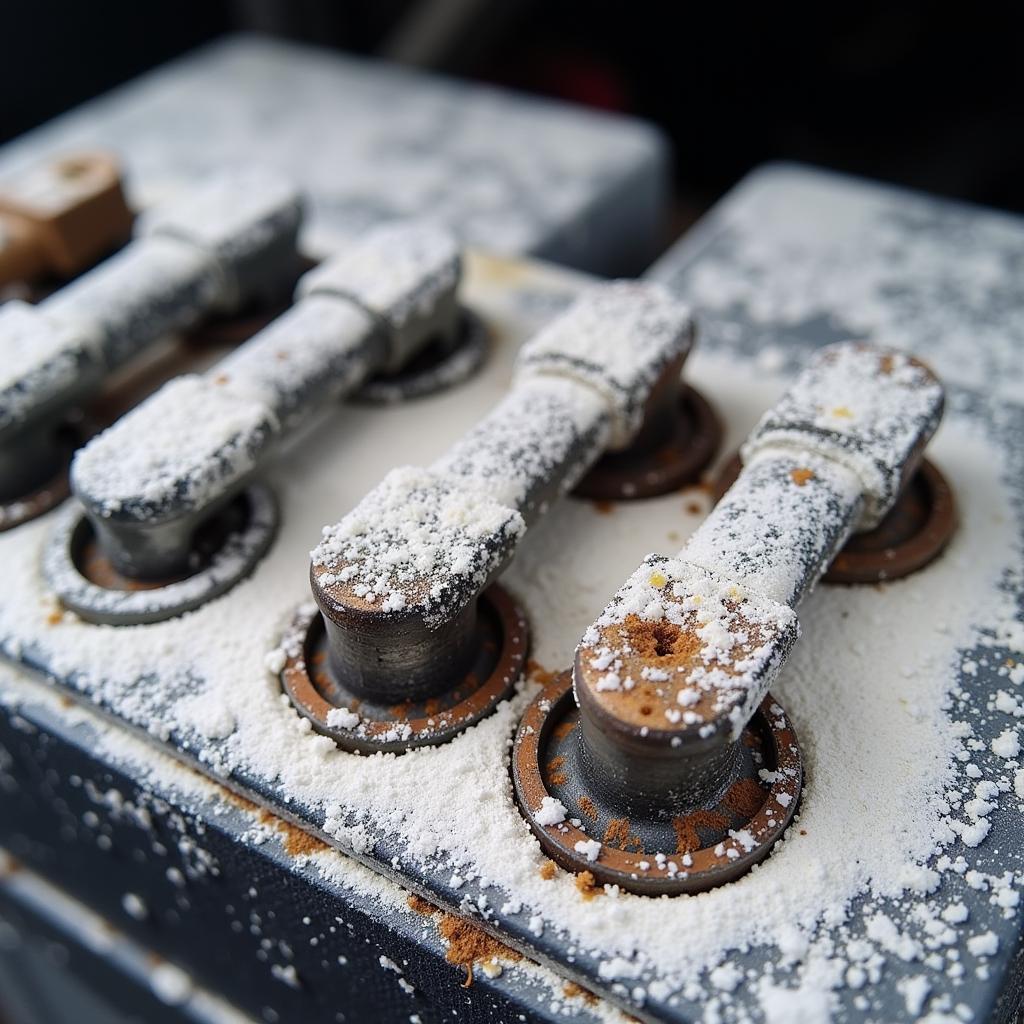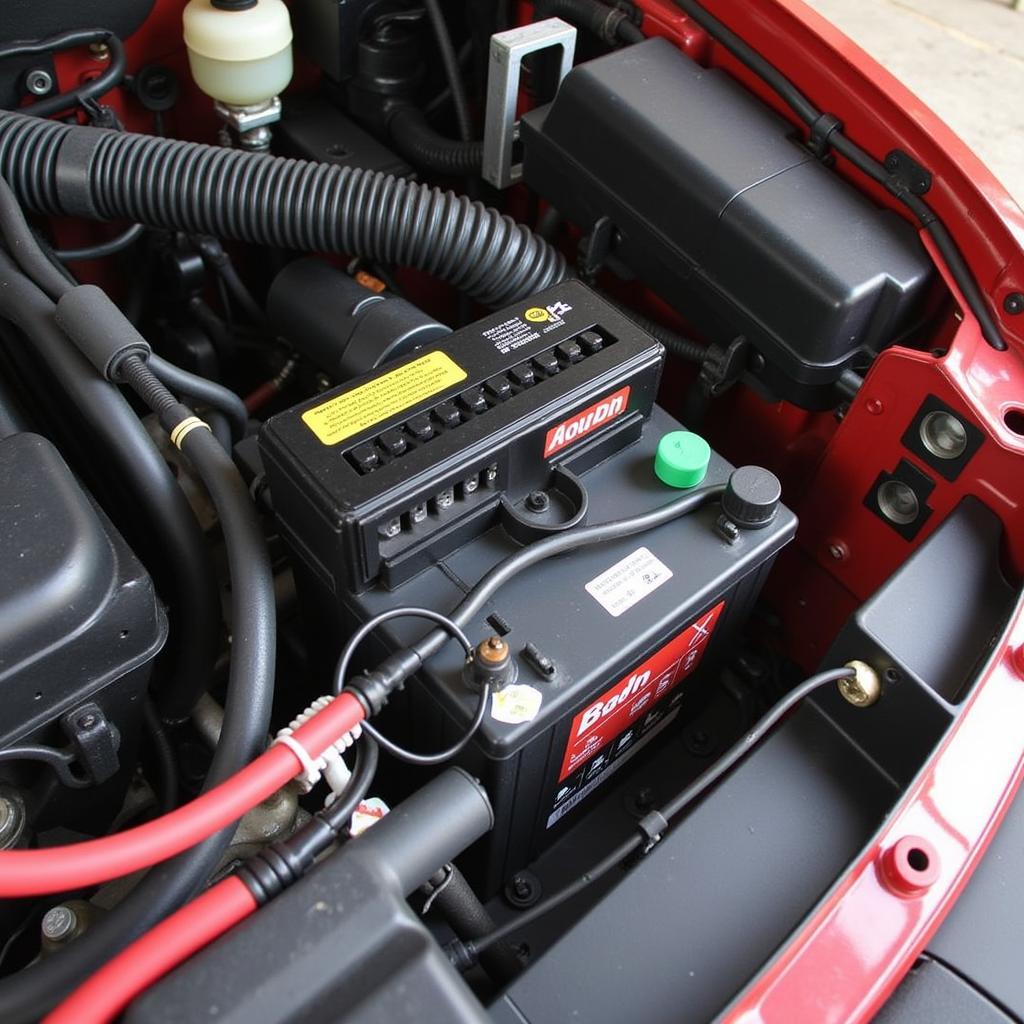A car completely dead with no power can be a frustrating experience. This article explores the common causes of a dead car battery and provides solutions, from simple DIY fixes to more complex issues requiring professional assistance. We’ll cover everything from checking your battery connections to utilizing remote diagnostics and software solutions. Let’s get your car back on the road!
Common Reasons for a “Car Completely Dead No Power” Situation
Why is your car completely dead with no power? Several culprits can cause this, and understanding them is the first step to getting your car running again. These range from simple issues like a loose battery cable to more complex problems requiring professional diagnosis.
Battery Problems
The most common reason for a car being completely dead is a dead battery. Over time, car batteries lose their ability to hold a charge. Extreme temperatures, both hot and cold, can accelerate this process.
- Corrosion: Corroded battery terminals can prevent the battery from delivering power to the car’s electrical system.
- Age: Batteries have a limited lifespan, typically 3-5 years.
- Parasitic Drain: Even when the car is off, certain electrical components can continue to draw power, slowly draining the battery. This is commonly caused by faulty interior lights, door switches, or aftermarket accessories.
 Corroded Car Battery Terminals
Corroded Car Battery Terminals
Alternator Issues
The alternator recharges the battery while the engine is running. A faulty alternator will not charge the battery, eventually leading to a “car completely dead no power” situation.
Starter Motor Failure
The starter motor is responsible for cranking the engine. A failed starter will prevent the engine from turning over, even with a fully charged battery. This can manifest as a completely dead car, particularly if attempts to start the car have drained the battery. Mazda Smart Brake Support with Collision Warning systems can also sometimes contribute to unexpected electrical issues if malfunctioning, though rarely a complete power loss. Check out this article about the mazda smart brake support with collision warning.
Troubleshooting a Dead Car
Here are some steps to troubleshoot a dead car:
- Check the Battery Connections: Ensure the battery terminals are clean and securely attached. Corrosion can be cleaned with a mixture of baking soda and water.
- Jump Start the Car: If the battery is dead, try jump-starting it using another vehicle or a portable jump starter. You might want to check if your Mazda 3 has a brake fluid warning light before attempting a jump start – learn more in this article: does mazda 3 has brake fluid warning light.
- Test the Alternator: Once the car is running, check the voltage across the battery terminals with a multimeter. A reading of around 14 volts indicates a functioning alternator.
- Listen for the Starter: When you turn the key, listen for the starter motor engaging. A clicking sound may indicate a faulty starter. Electronic parking brake issues, indicated by a warning light, can also sometimes lead to starting problems. You can learn more about this in our article about the electronic parking brake warning light.
Remote Diagnostics and Software Solutions
In today’s technologically advanced vehicles, remote diagnostics and software updates can sometimes resolve complex electrical issues that lead to a “car completely dead no power” situation. These advancements allow technicians to diagnose and even fix problems remotely without physical access to the vehicle. CX9 owners, for example, can benefit from remote diagnostics related to their safety brake warnings, as detailed in our article cx9 safety brakes warning.
Quote from John Smith, Senior Automotive Electrical Engineer: “Remote diagnostics are revolutionizing how we troubleshoot and repair modern vehicles. They allow us to identify and address software-related issues quickly and efficiently, saving car owners time and money.”
Conclusion
Experiencing a “car completely dead no power” scenario can be alarming. By understanding the potential causes and following the troubleshooting steps outlined in this article, you can often pinpoint the problem and get your car running again. For more complex issues, remember that remote diagnostics and software solutions can offer effective solutions. Don’t hesitate to seek professional help if you are unsure about any step. It’s always best to consult with a qualified technician if the problem persists. You might find helpful information regarding brake fluid warning for Mazda 6 in this article: mazda 6 brake fluid warning.
Quote from Maria Garcia, Lead Diagnostic Technician: “Regular maintenance, including battery checks and alternator inspections, can prevent many of the issues that lead to a dead car.”
FAQ
- How long does a car battery typically last? A car battery typically lasts 3-5 years.
- What are the signs of a bad alternator? Dim headlights, flickering dashboard lights, and a dead battery are common signs of a failing alternator.
- Can I jump start my car with a portable jump starter? Yes, portable jump starters are a convenient way to jump start a dead battery.
- How do I clean corroded battery terminals? Mix baking soda and water to create a paste and apply it to the corroded terminals. Scrub with a wire brush and rinse with clean water.
- What is a parasitic drain? A parasitic drain is a constant draw of power from the battery even when the car is off.
- What should I do if my car is completely dead and won’t jump start? If your car is completely dead and won’t jump start, it’s likely a more serious issue, and you should seek professional assistance.
- Can remote diagnostics fix a dead battery? While remote diagnostics can identify some electrical faults, they cannot physically recharge or replace a dead battery.

